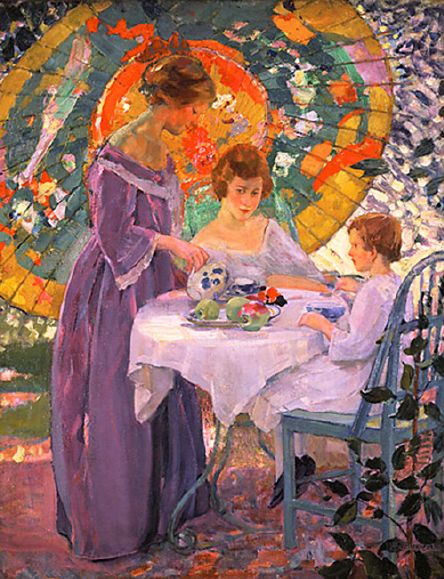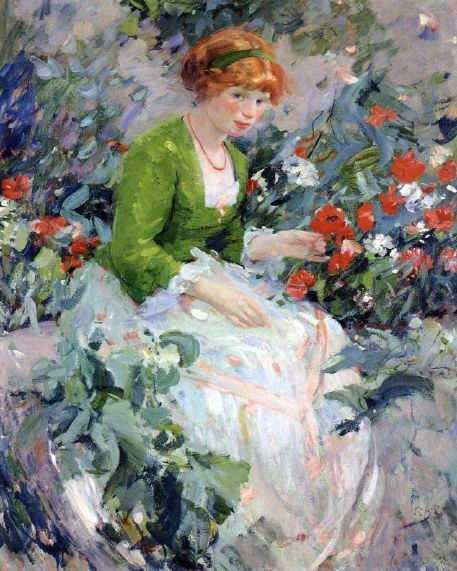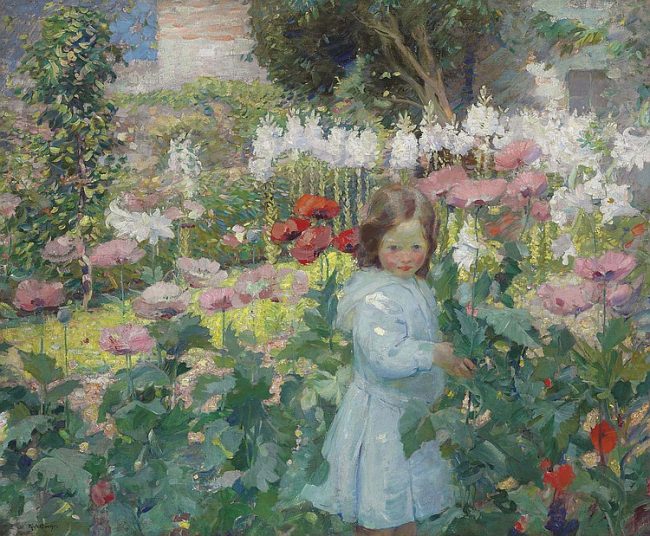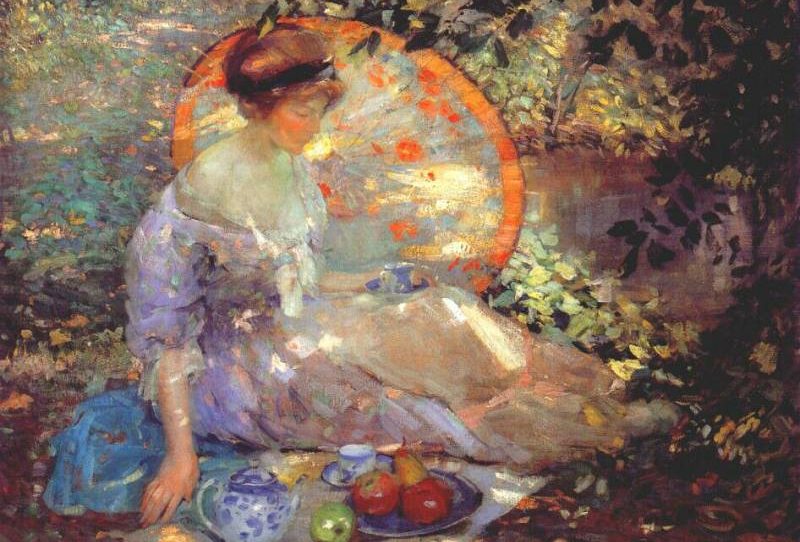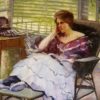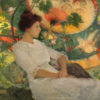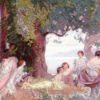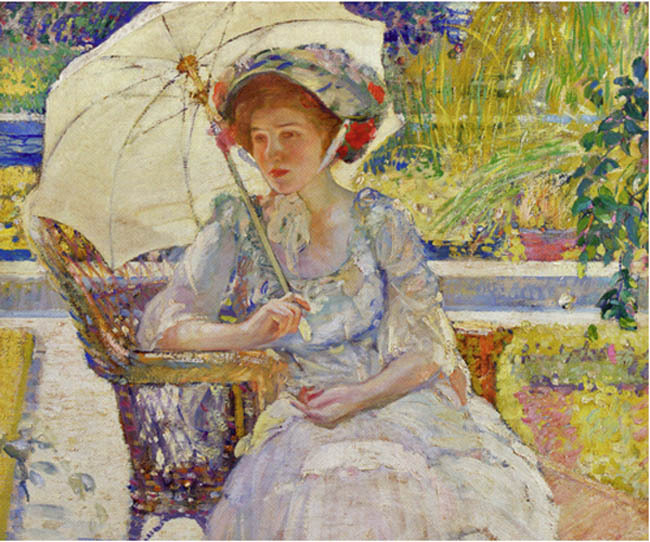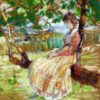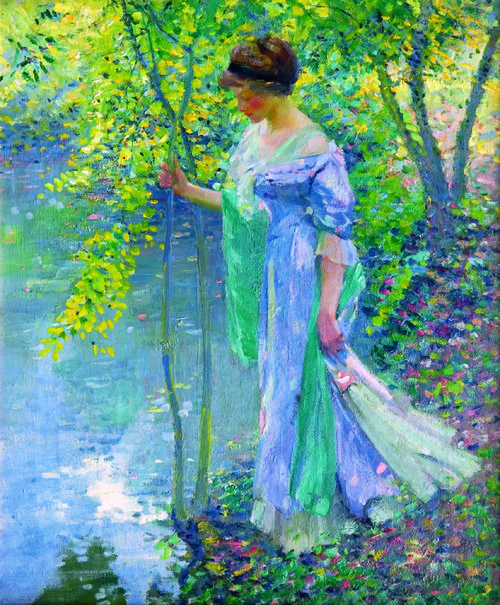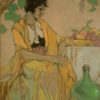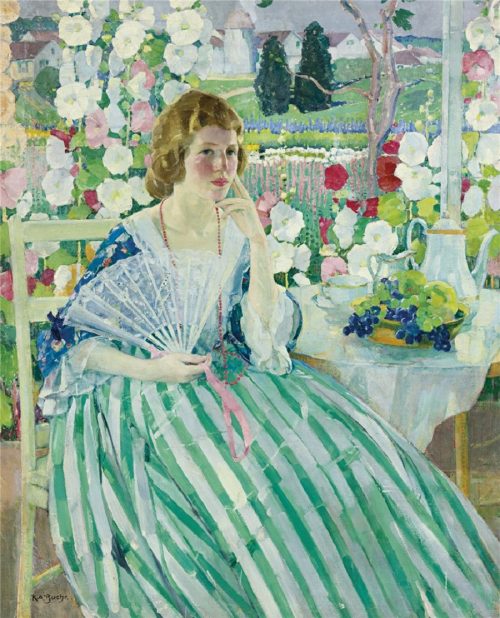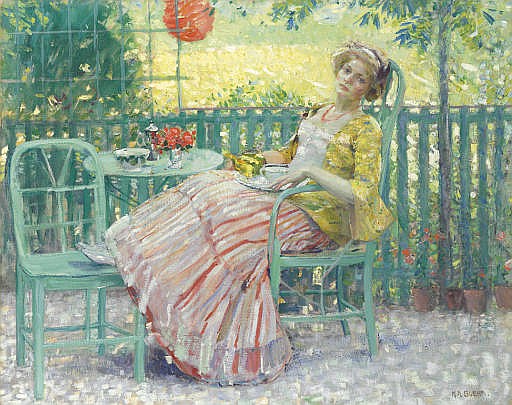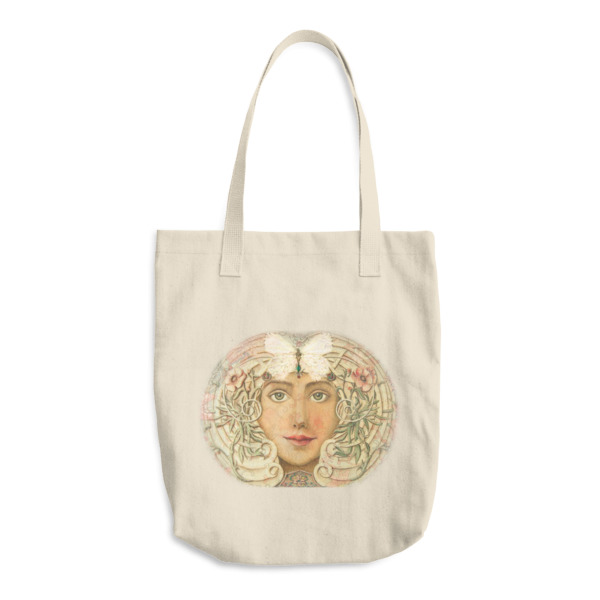Karl Albert Buehr (1866–1952)
Karl Albert Buehr was a painter born in Germany. Buehr was born in Feuerbach near Stuttgart. He was the son of Frederick Buehr and Henrietta Doh. He moved to Chicago with his parents and siblings in the 1880s.
In Chicago, young Karl worked at various jobs until he was employed by a lithograph company near the Art Institute of Chicago. Introduced to art at work, Karl paid regular visits to the Art Institute, where he found part-time employment, enabling him to enroll in night classes.
Later, working at the Institute as a night watchman, he had a unique opportunity to study the masters and actually posted sketchings that blended in favorably with student’s work. Having studied under John H. Vanderpoel, Buehr graduated with honors, while his work aroused such admiration that he was offered a teaching post there, which he maintained for many years thereafter.
He graduated from the Art Inst. of Chicago and served in the IL Cav in the Spanish–American War. In 1922, he was elected into the National Academy of Design as an Associate member. In 1904, Buehr received a bronze medal at the St. Louis Universal Exposition, then, in 1905,
Buehr and his family moved to France, thanks to a wealthy Chicago patron, and they spent the following year in Taormina, Sicily, where the artist painted local subjects, executing both genre subjects and landscapes as well as time in Venice. Buehr spent at least some time in Paris, where he worked with Raphaël Collin at the Académie Julian. Buehr remained an expressive colorist, but broadened his brushwork somewhat in later years when impressionism waned.
Back in America, he was immediately successful. He won a silver medal at the Panama-Pacific International Exposition in San Francisco and the Purchase Prize of the Chicago Municipal Art Commission in the following year. So famed was Buehr that had a one-man exhibition at the Century of Progress Fair in Chicago in 1934.
